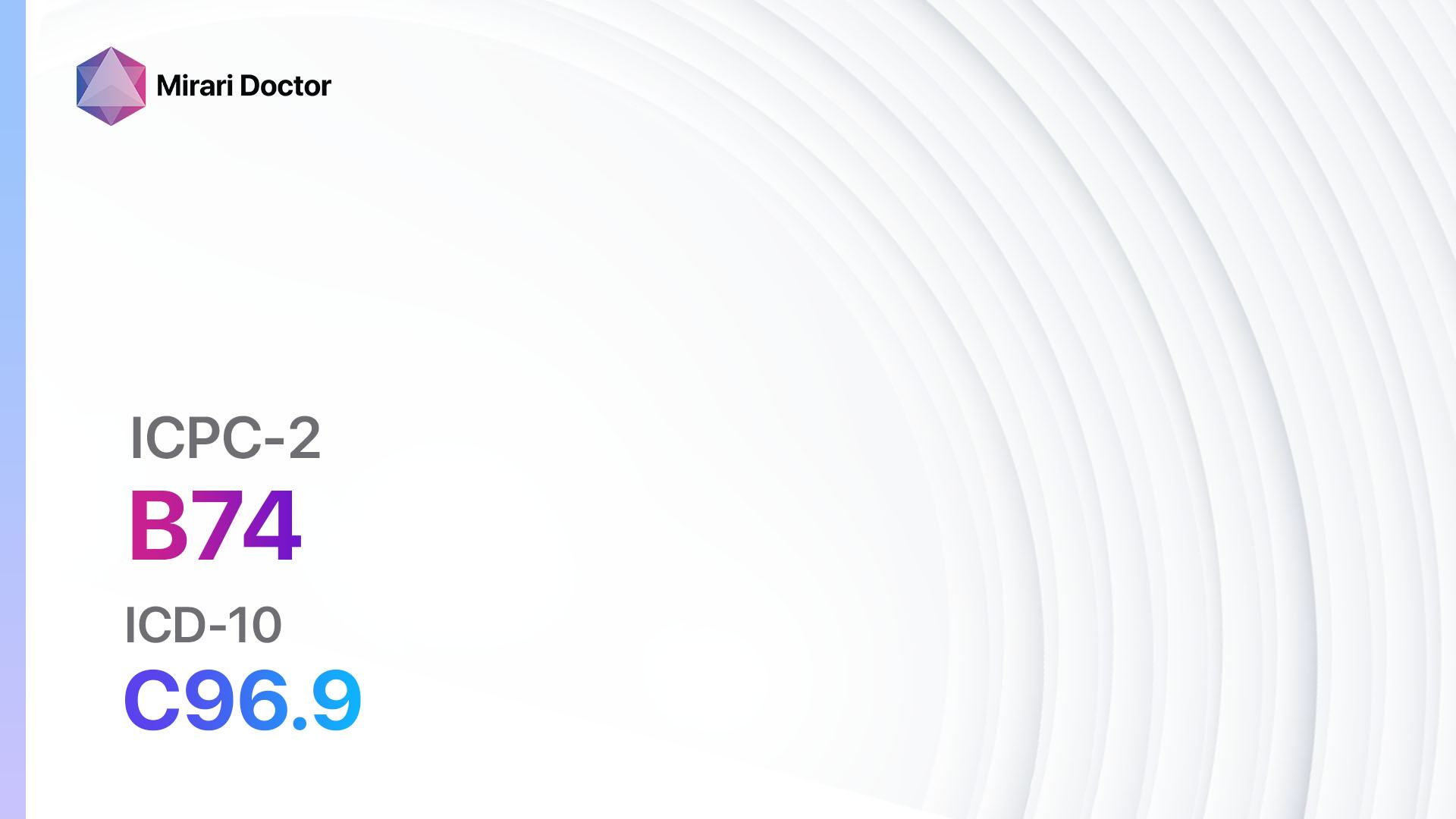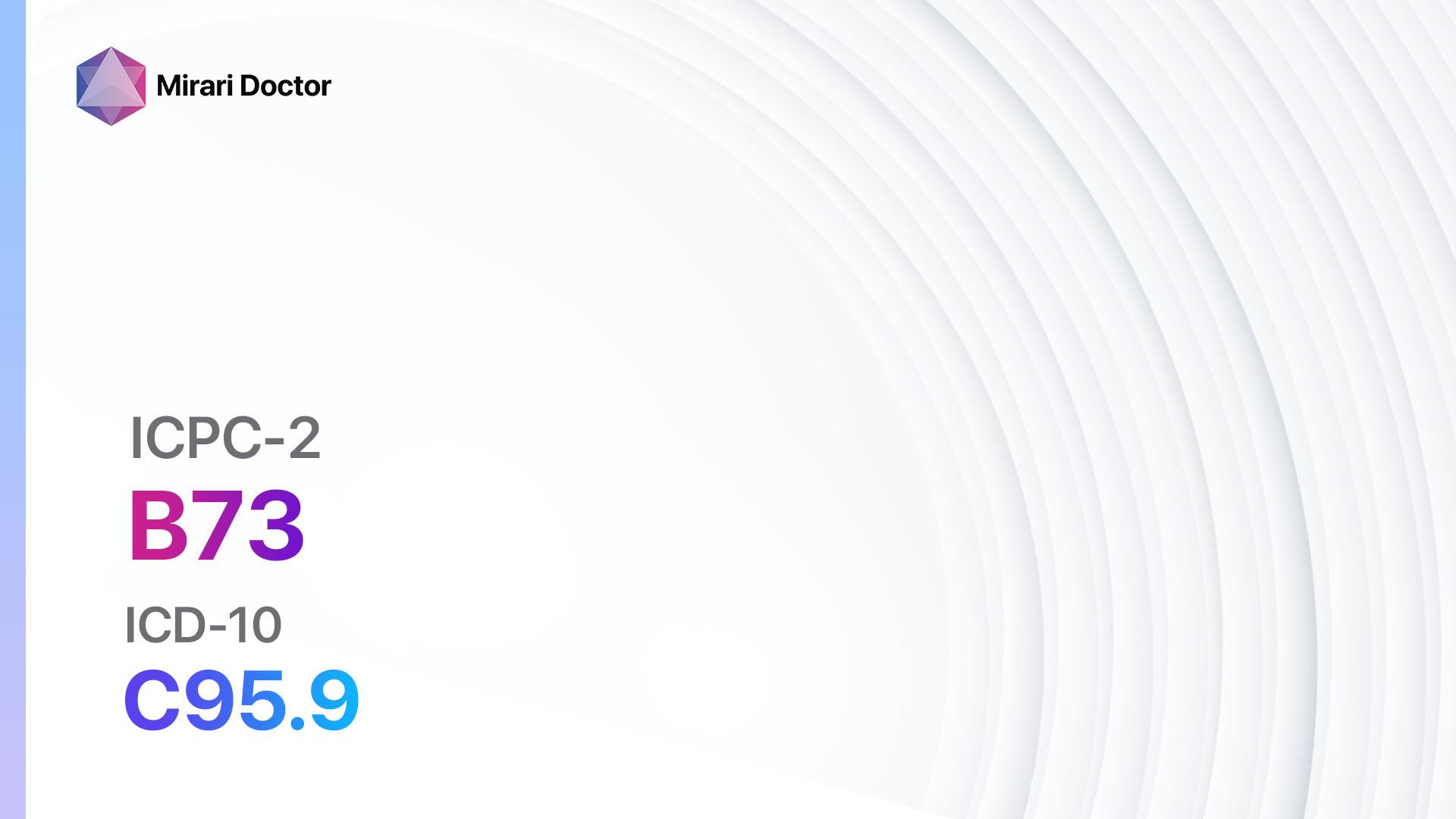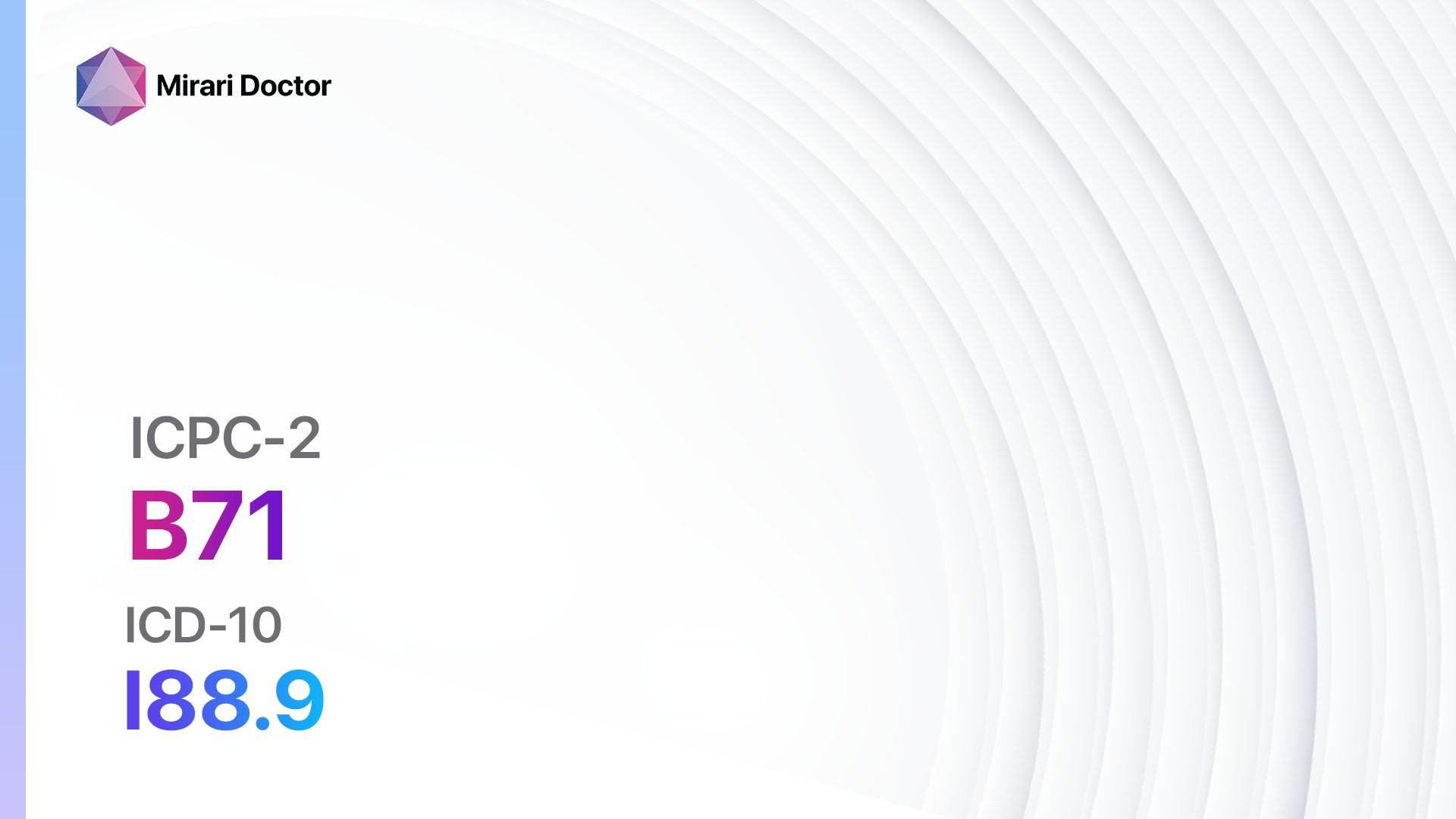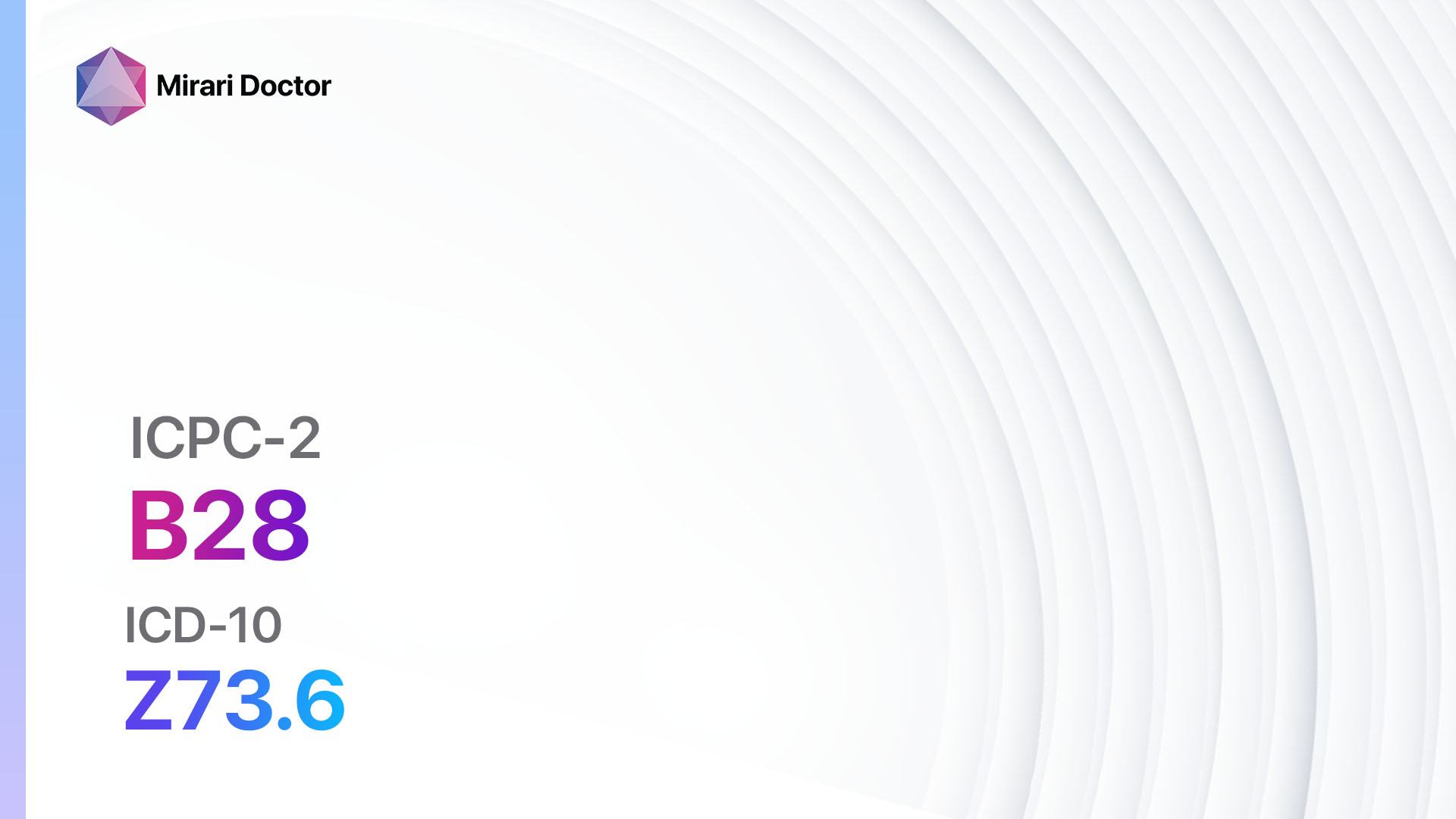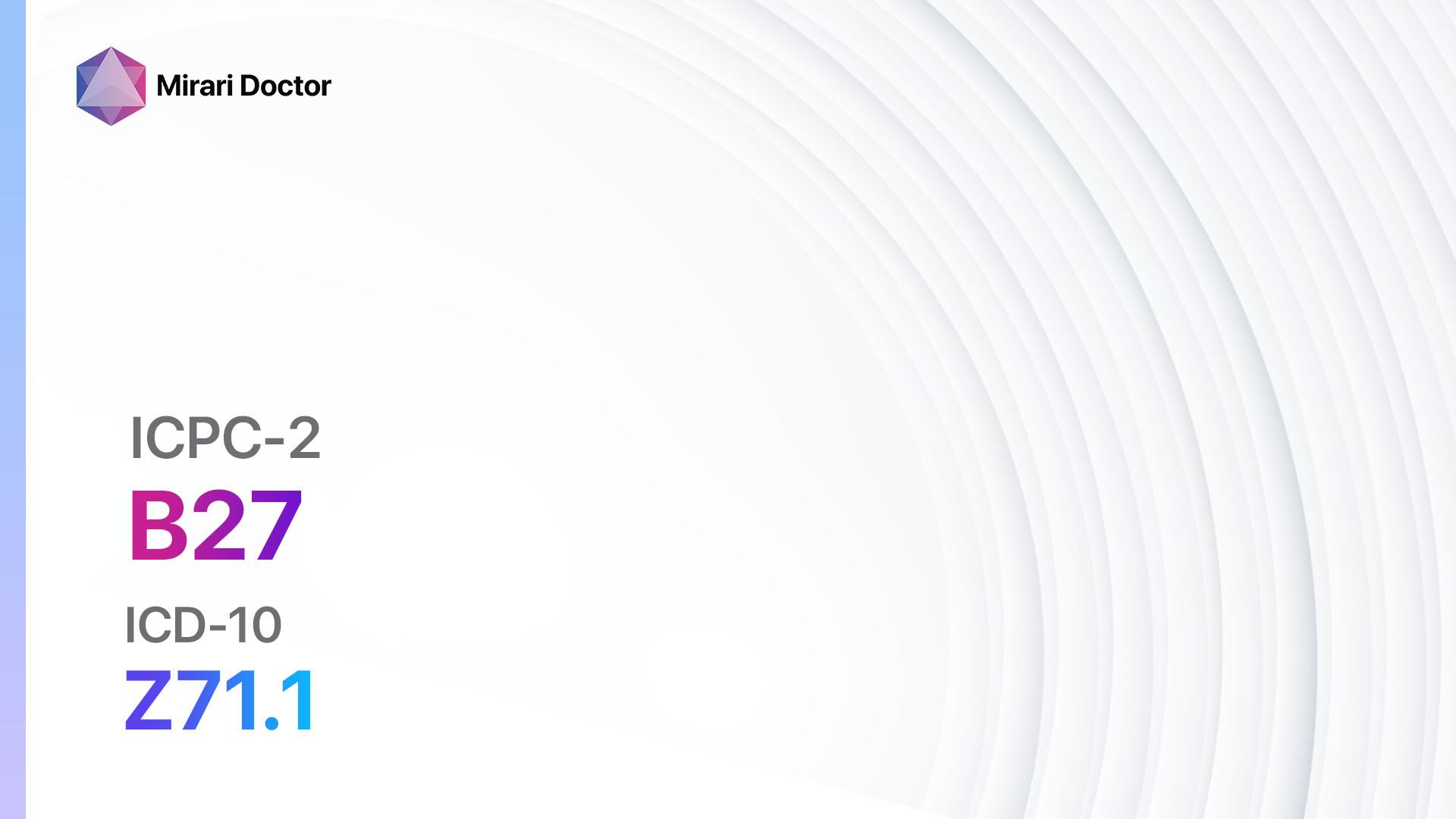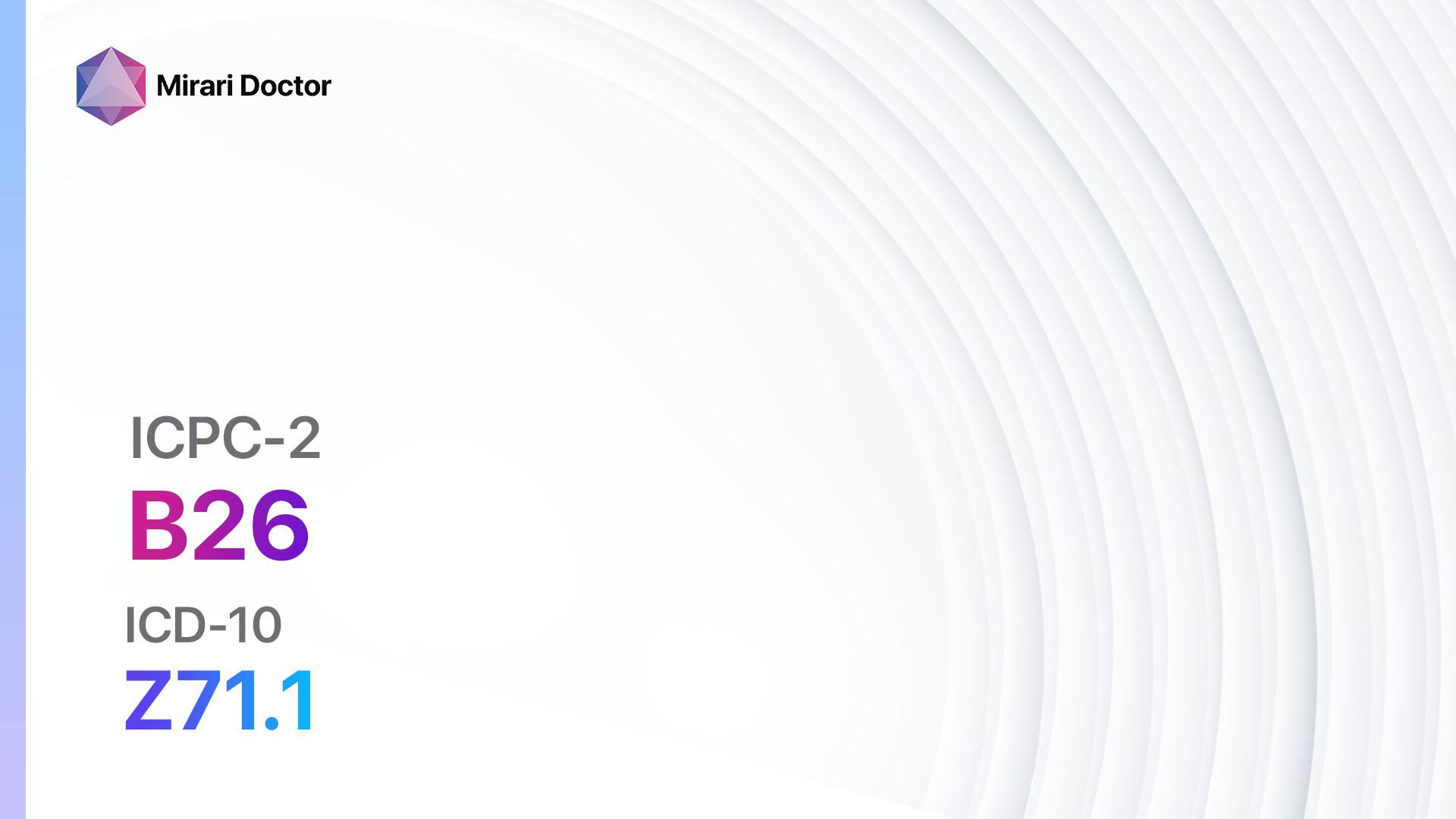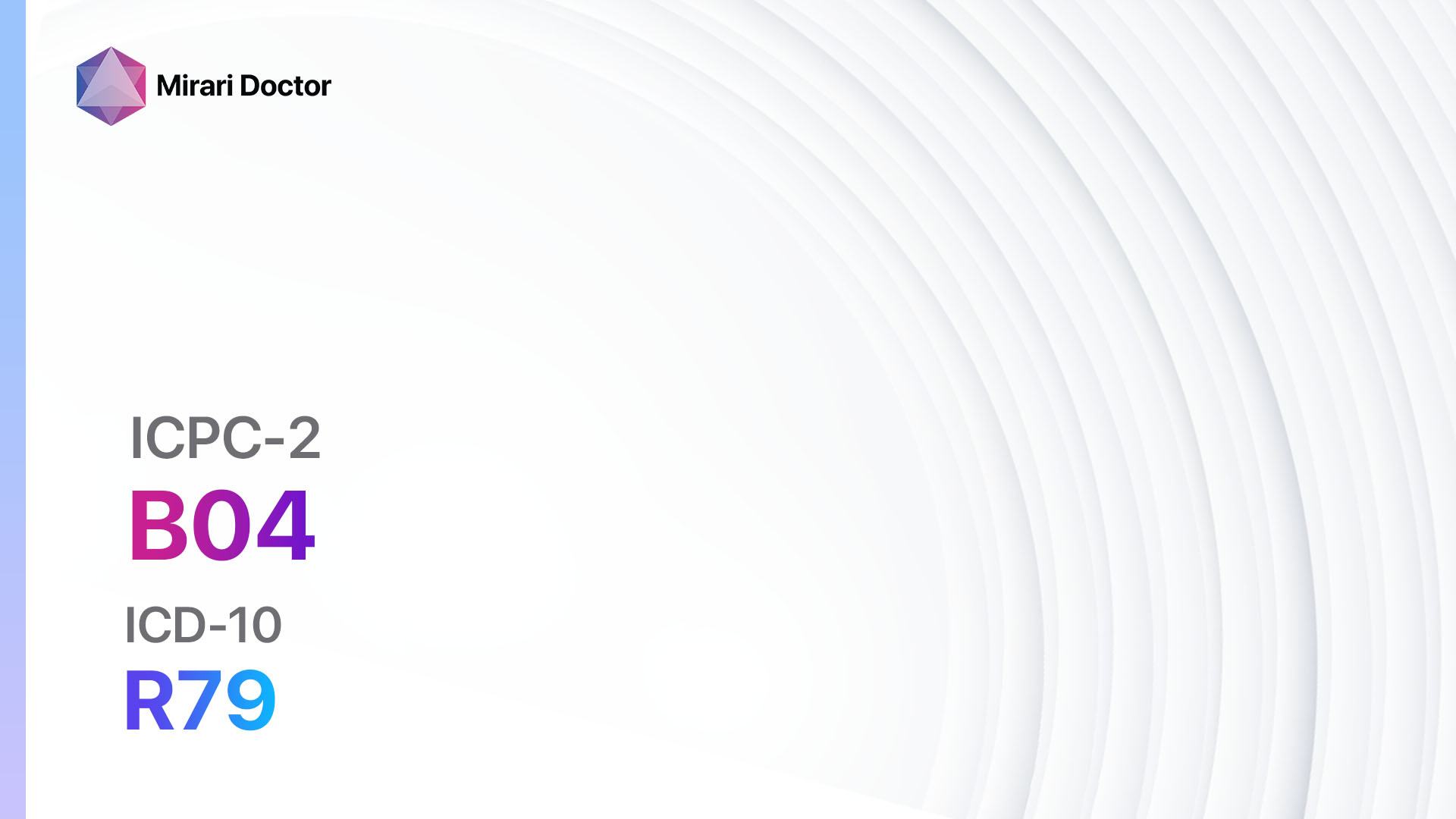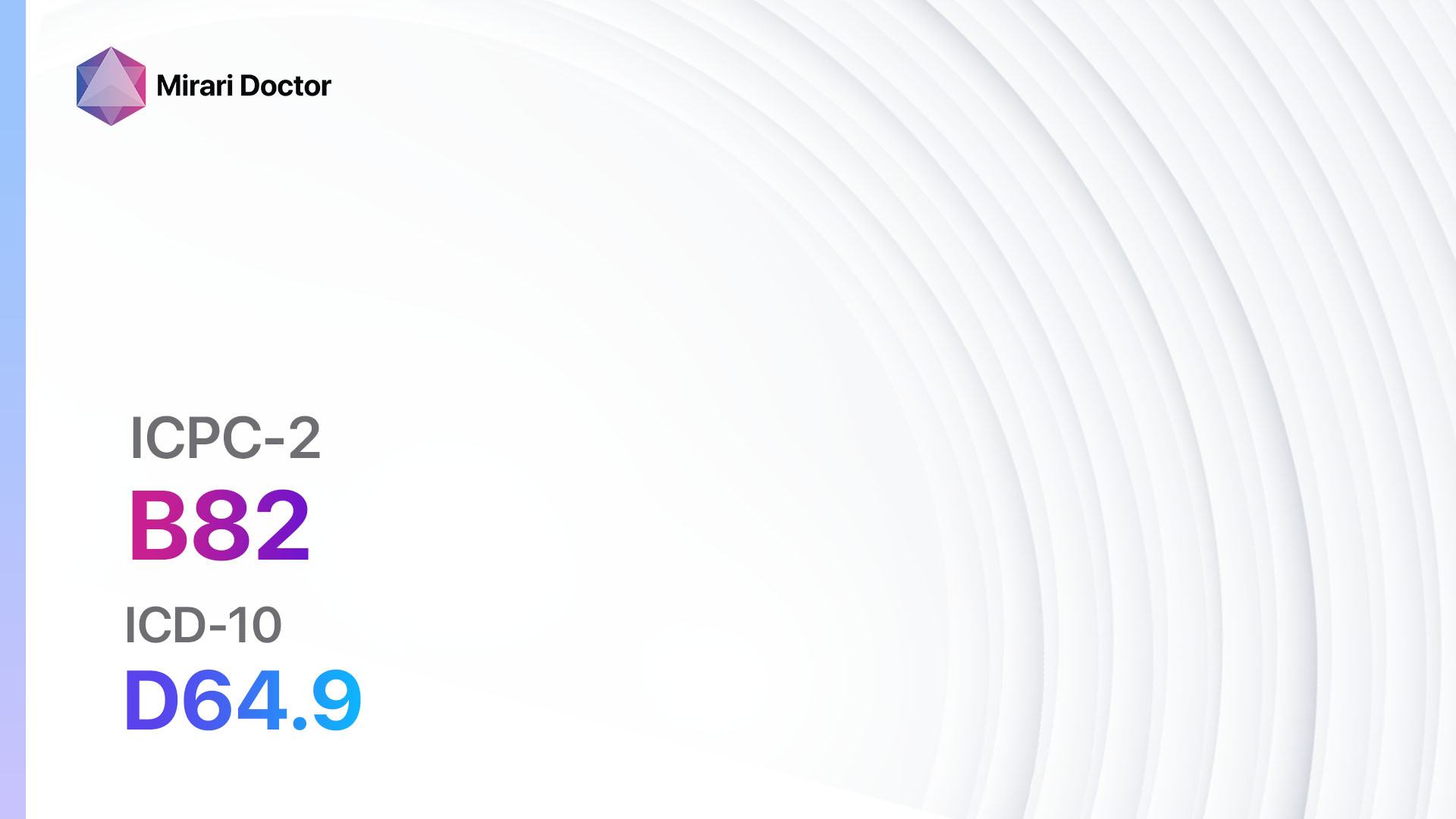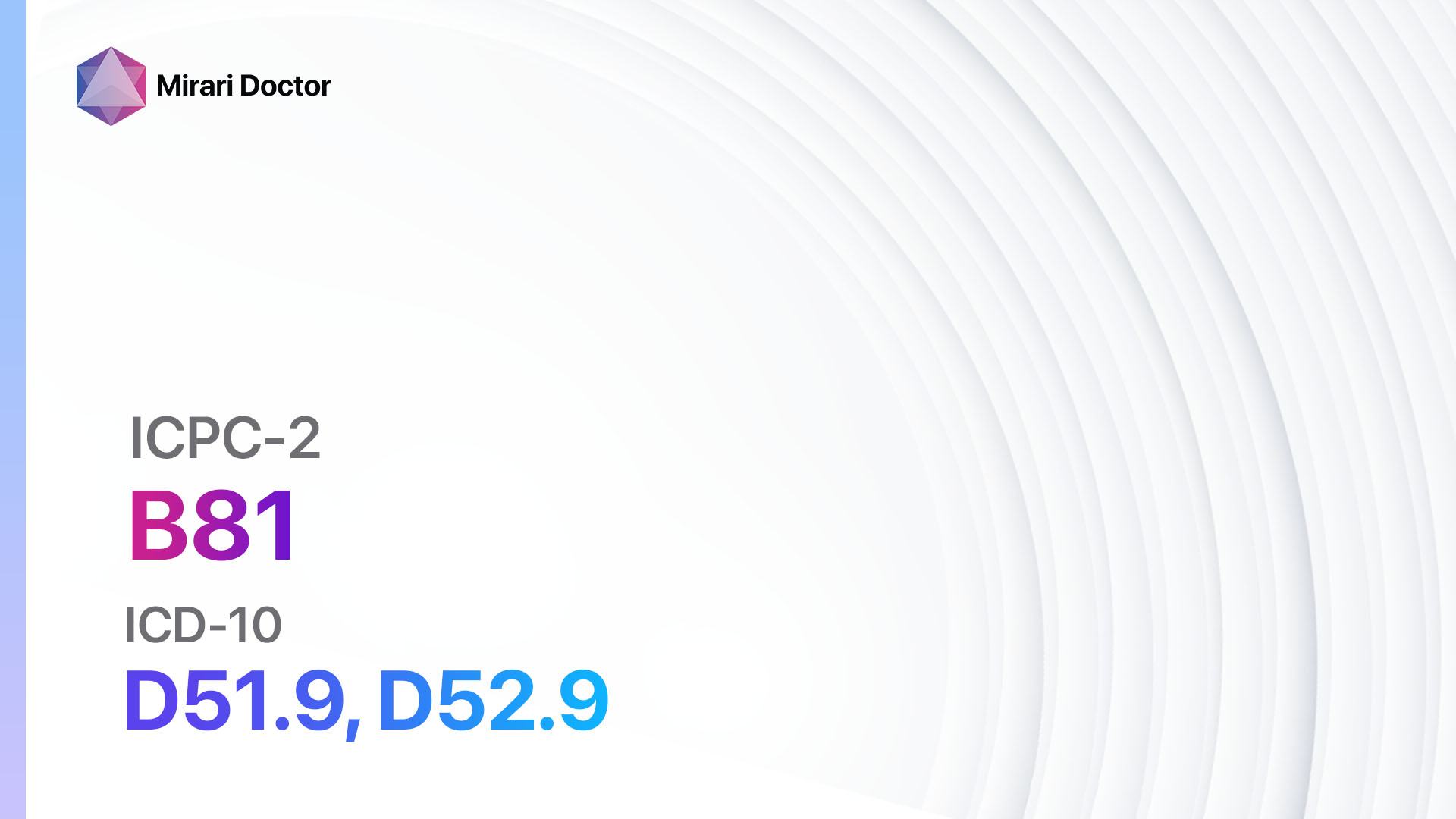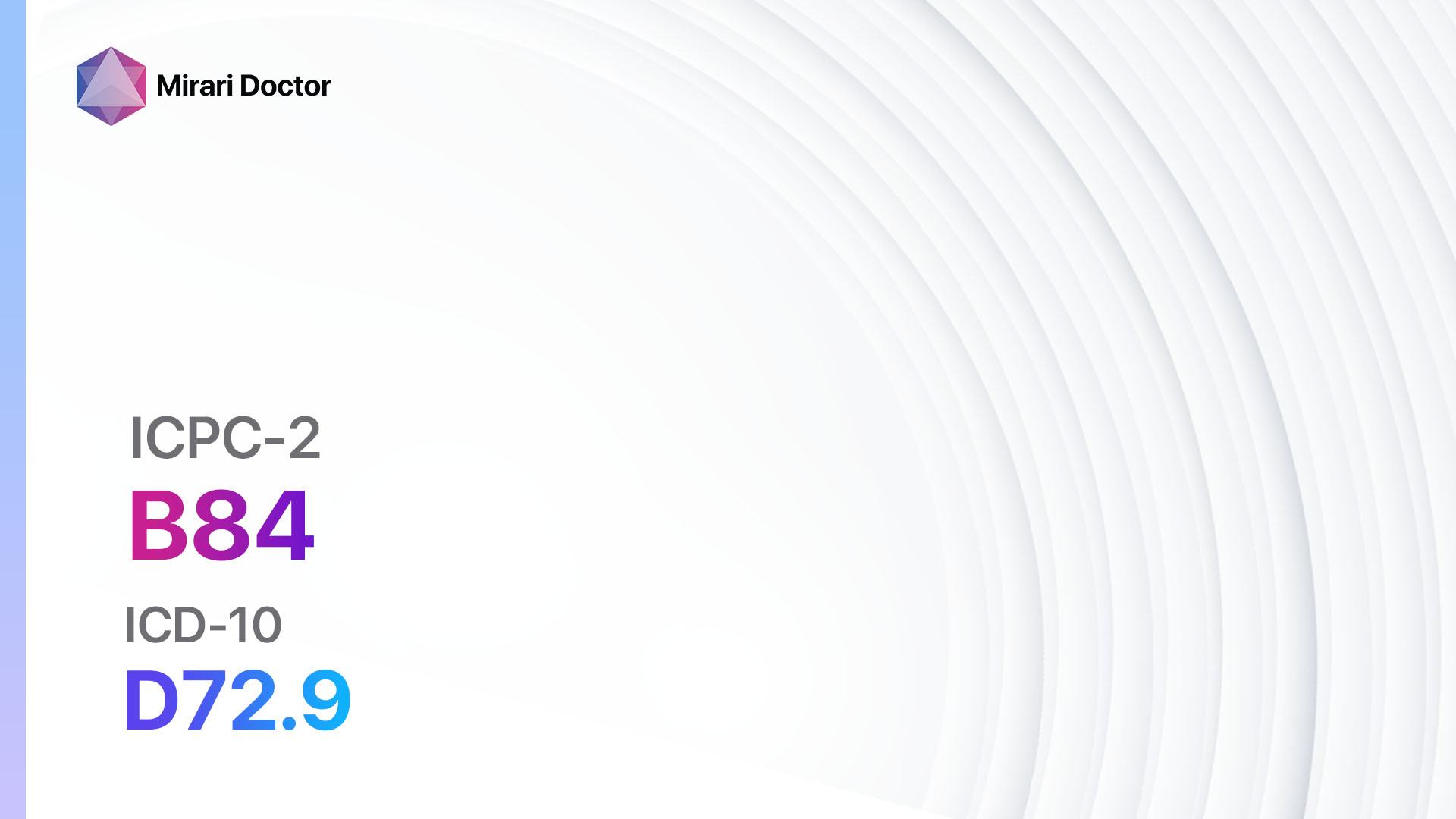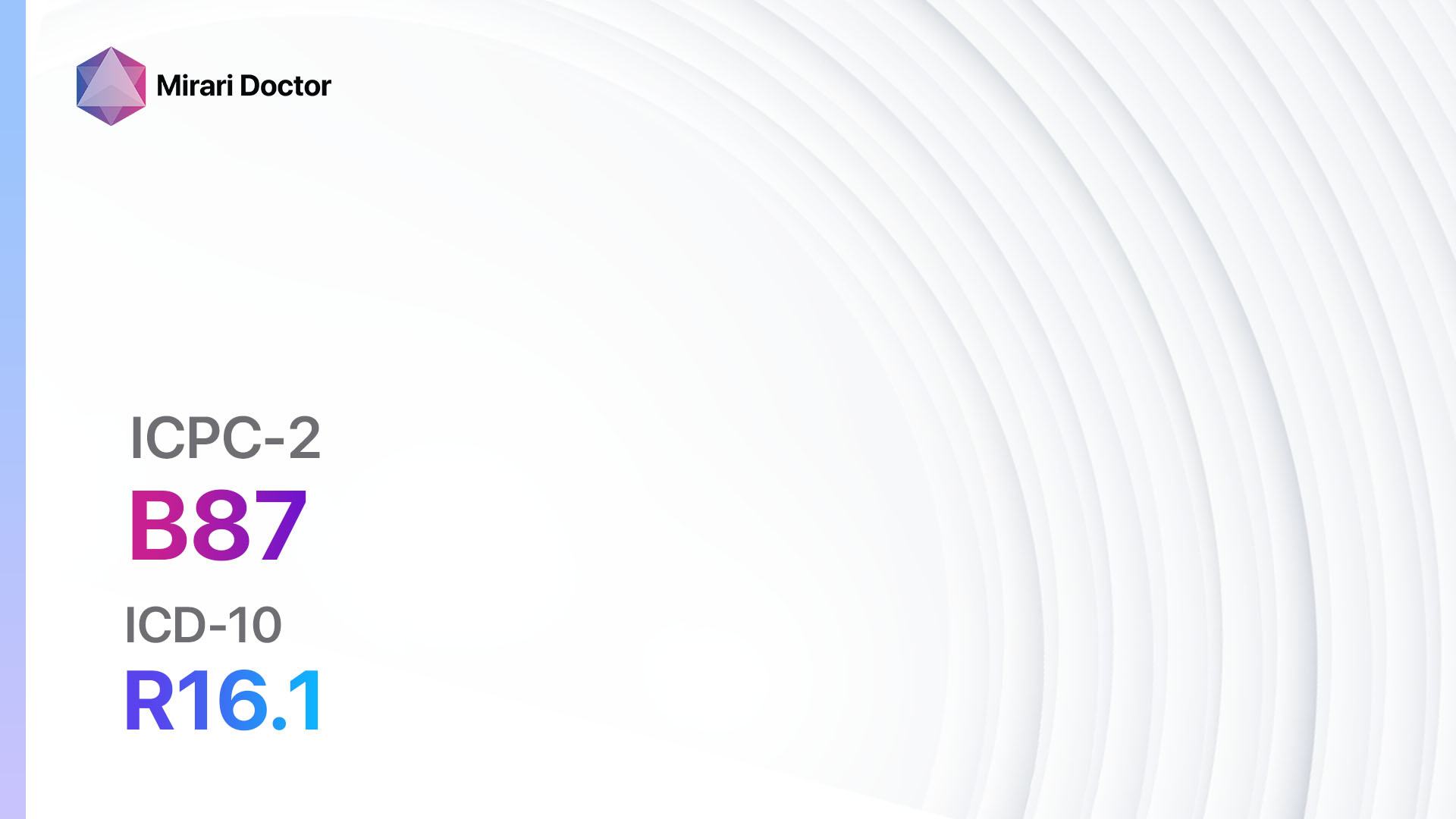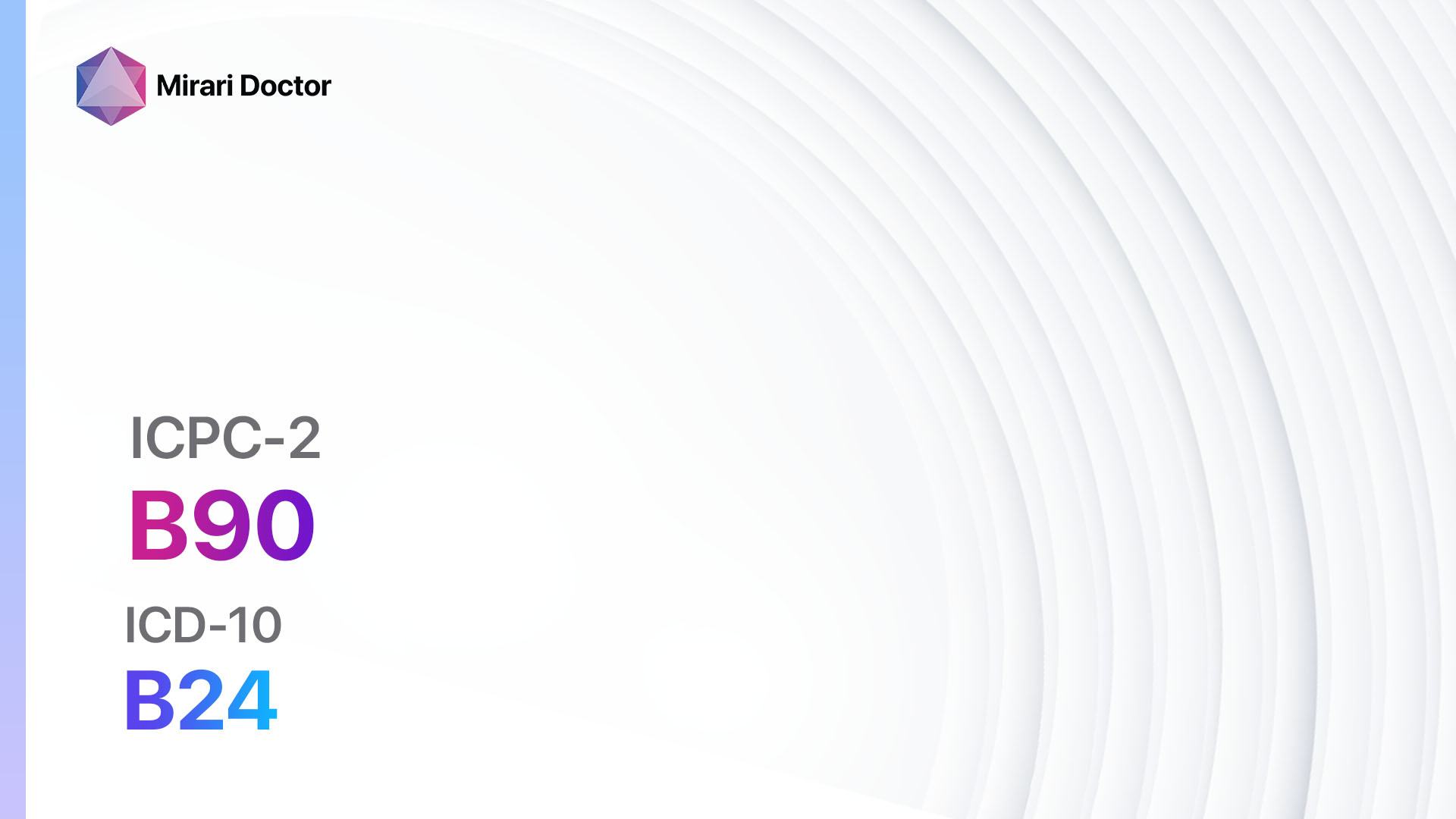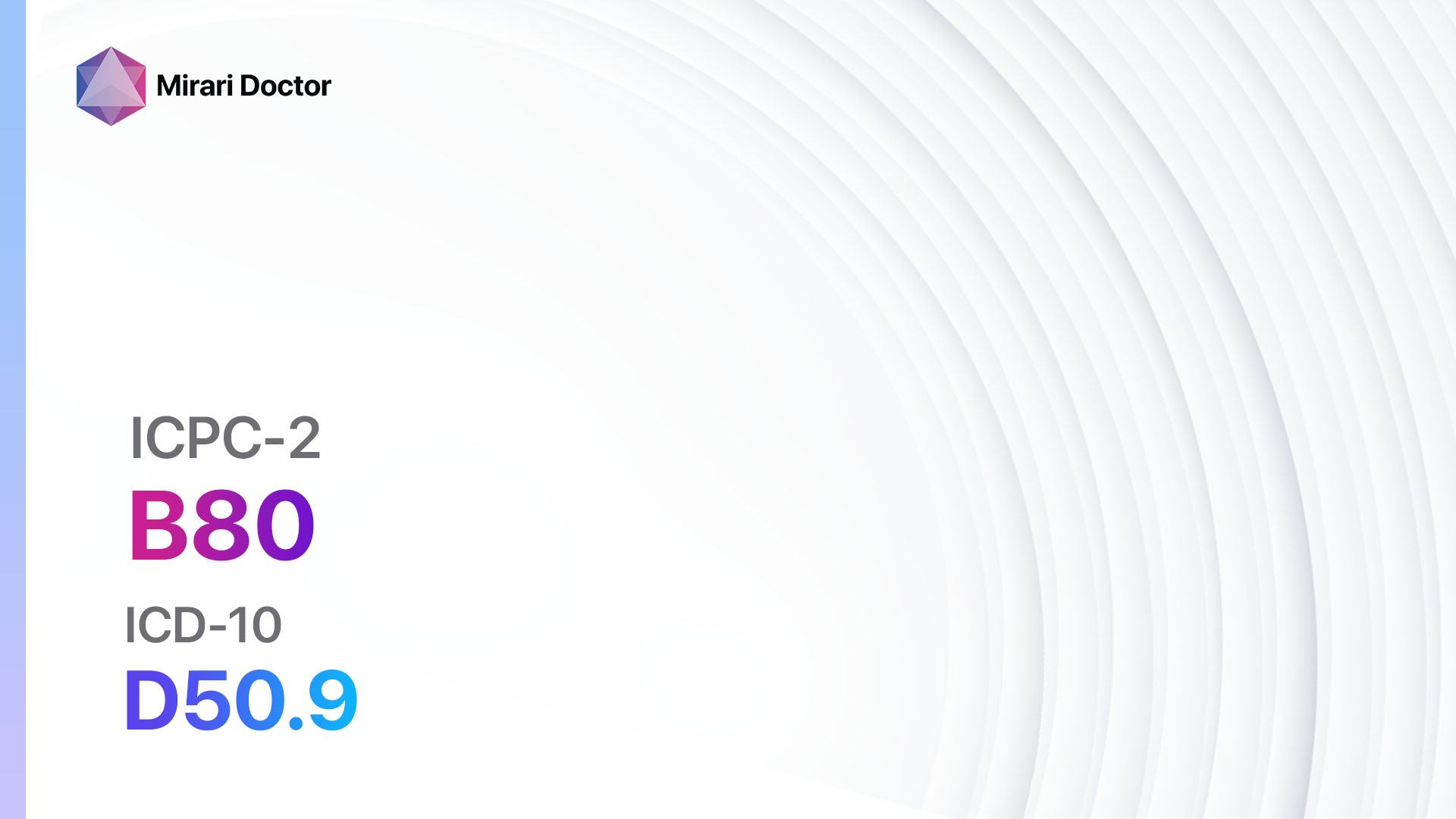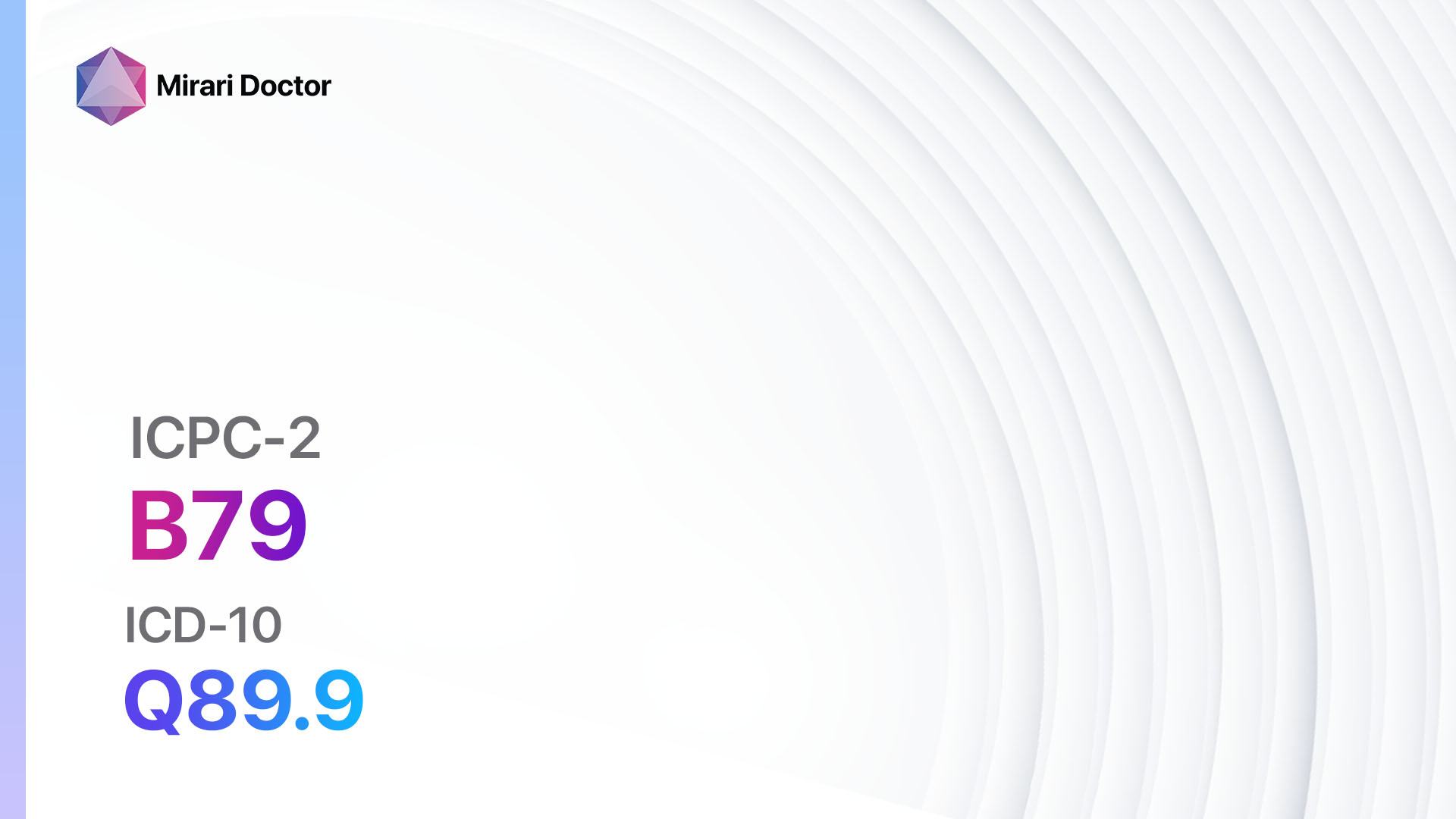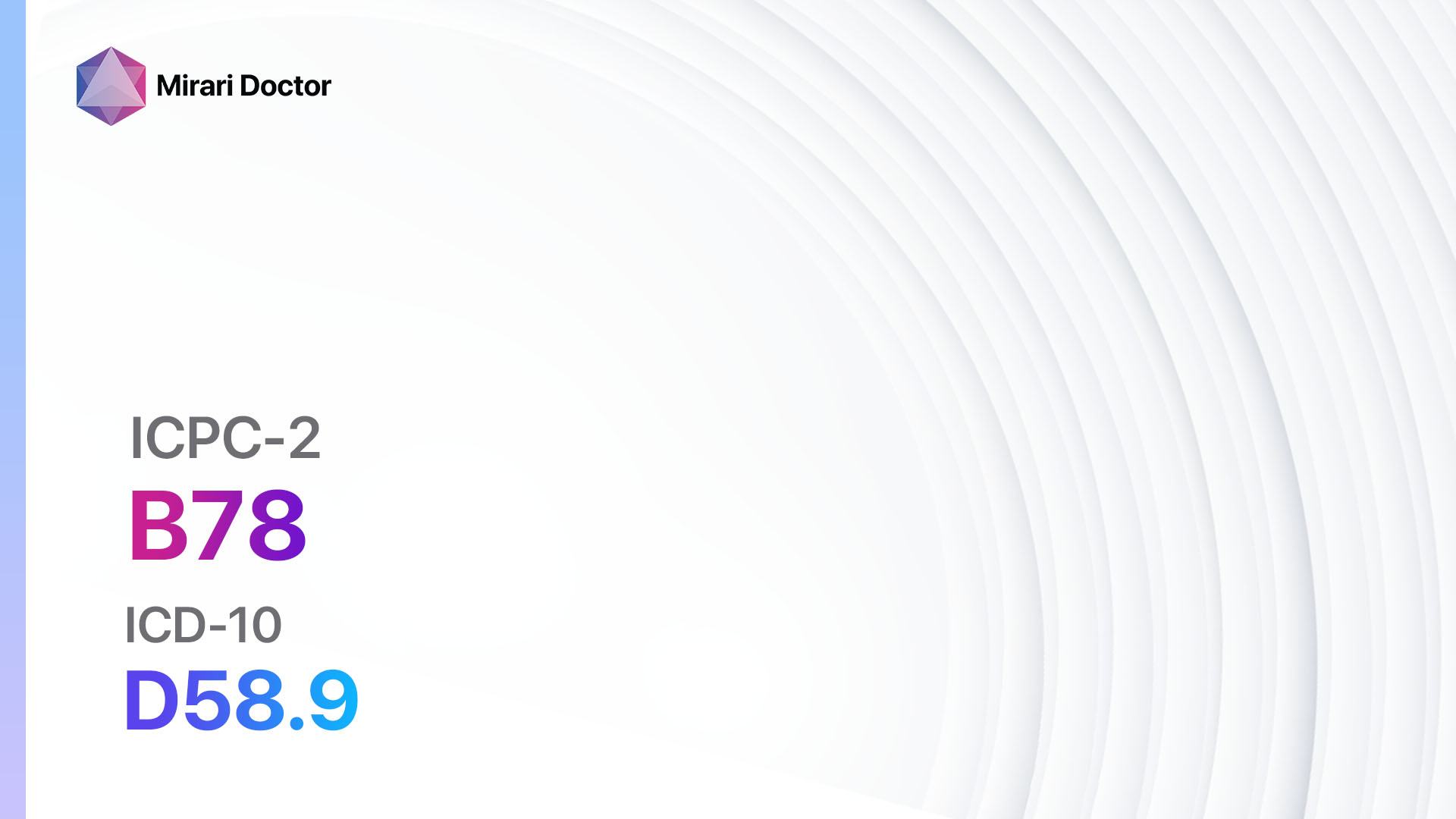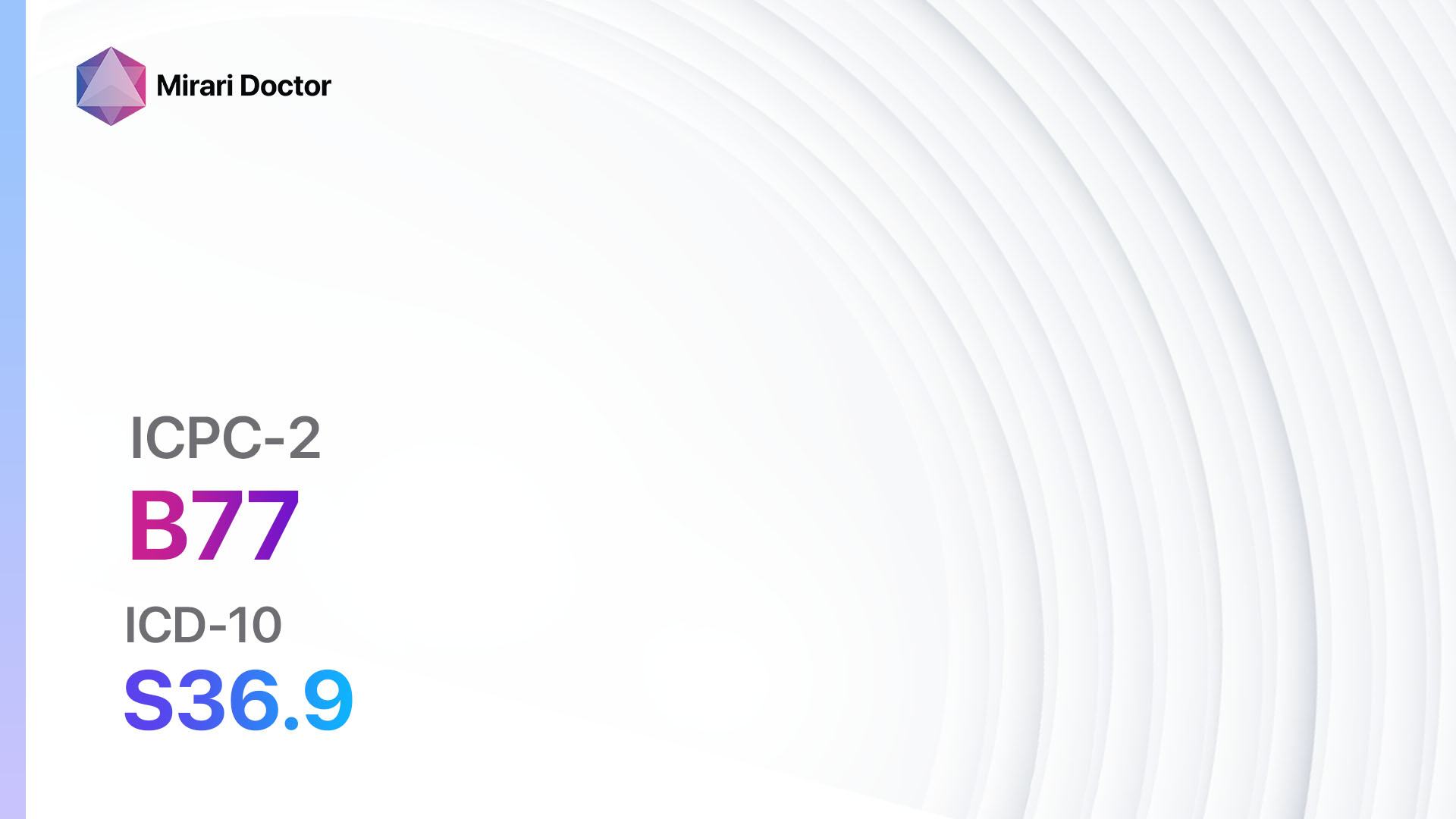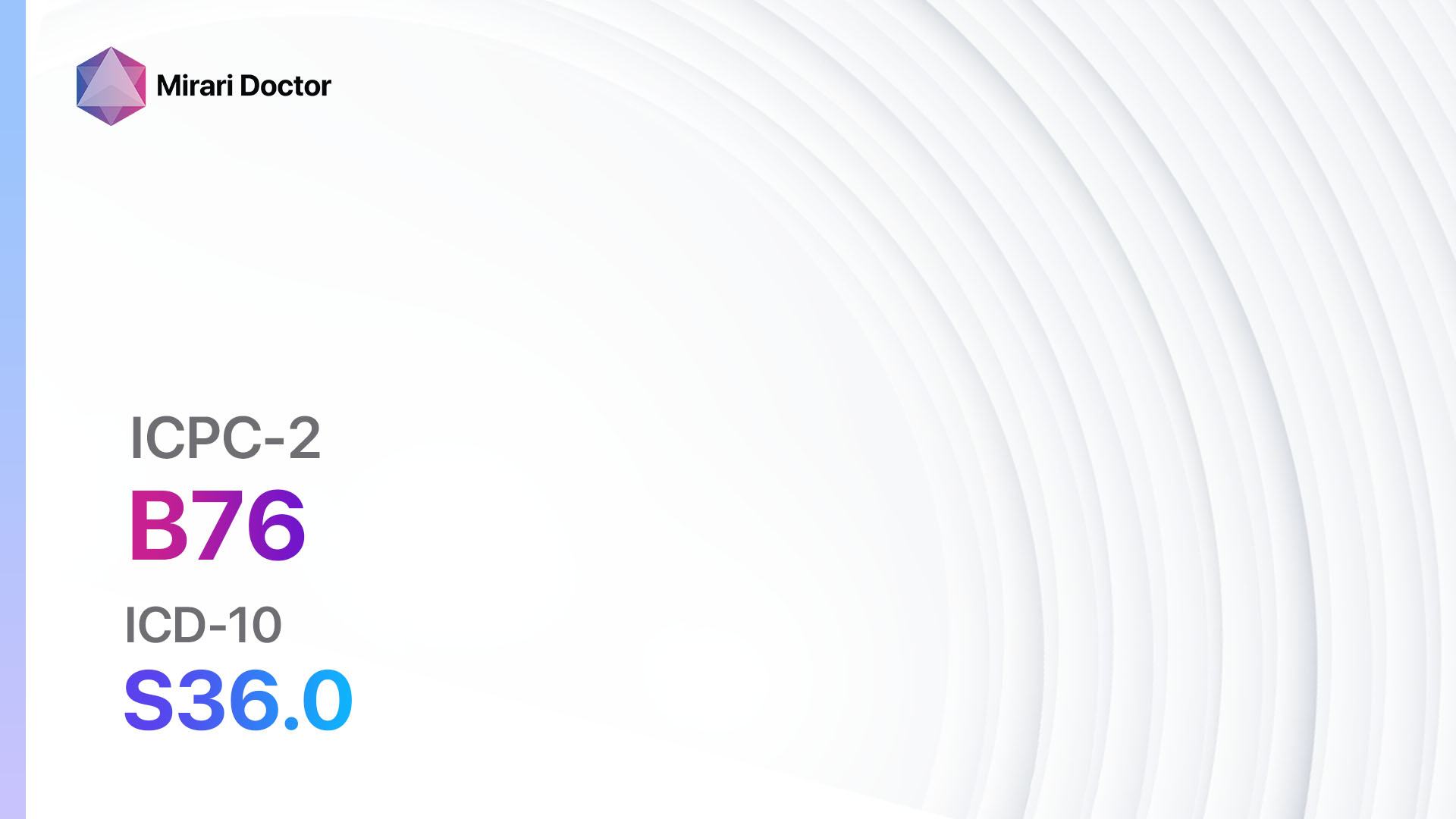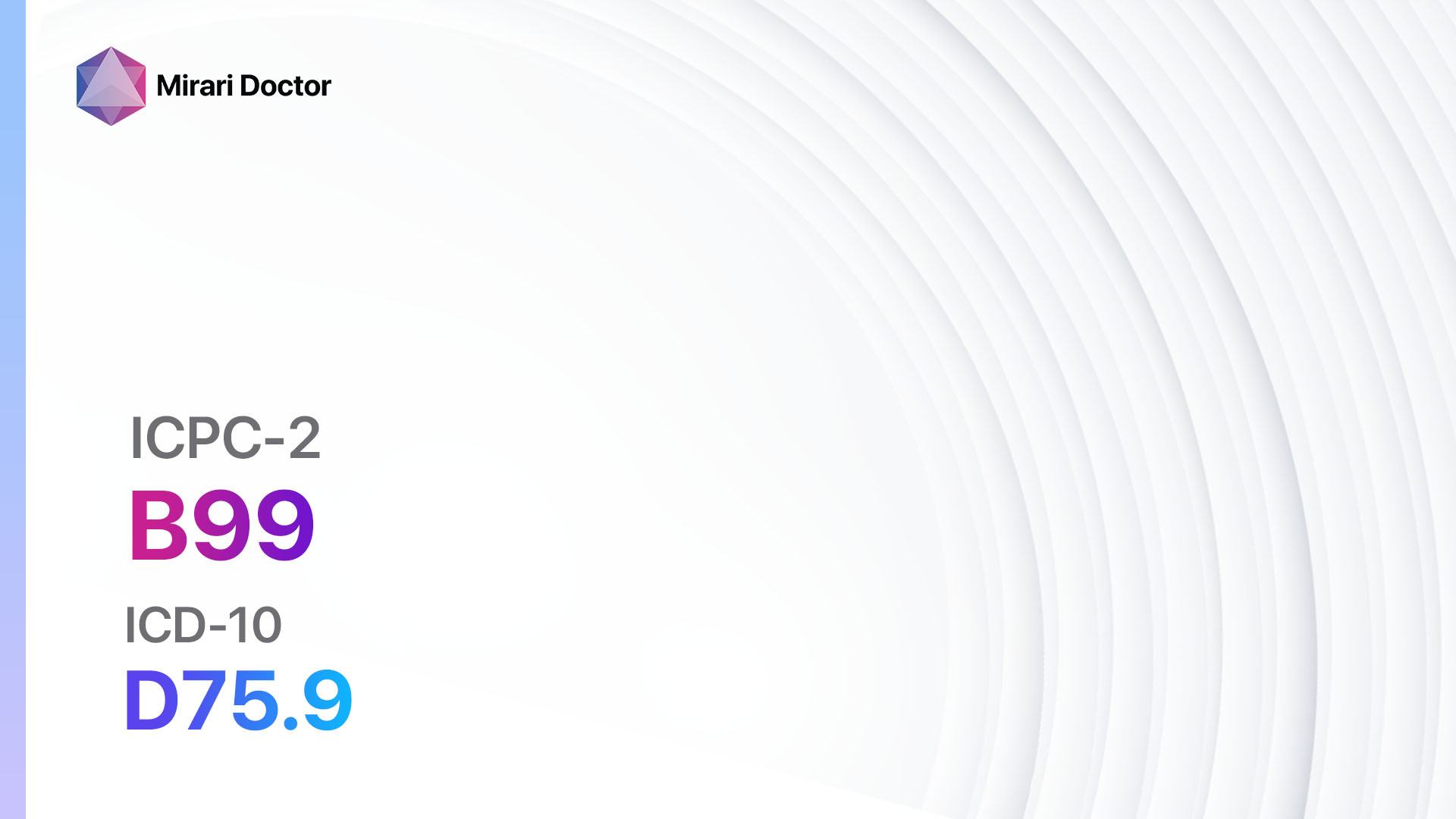
Introduction
Blood/lymph/spleen disease other (ICPC-2: B99) refers to a category of diseases that affect the blood, lymphatic system, or spleen and do not fall under any specific diagnosis[1]. These conditions encompass unspecified disorders of blood and blood-forming organs, making diagnosis and treatment challenging due to their varied presentations[2]. This comprehensive guide provides an evidence-based overview of the symptoms, causes, diagnostic approaches, and treatment options for Blood/lymph/spleen disease other (ICPC-2: B99).
Codes
- ICPC-2 Code: B99 Blood/lymph/spleen disease other
- ICD-10 Code: D75.9 Disease of blood and blood-forming organs, unspecified[3]
Symptoms
The symptoms of blood, lymph, and spleen diseases can be diverse and often overlap with other conditions. Common presentations include:
- Fatigue: Persistent tiredness or lack of energy, often one of the earliest symptoms[4]
- Enlarged lymph nodes: Swollen lymph nodes in the neck, armpits, or groin, particularly when greater than 2.5 cm without signs of infection[5]
- Easy bruising or bleeding: Unexplained bruises or prolonged bleeding episodes[4]
- Recurrent infections: Frequent infections or infections that take longer than expected to resolve[6]
- Abdominal pain or discomfort: Pain or feeling of fullness, particularly below the ribs due to spleen or liver involvement[7]
- Unexplained weight loss: Significant weight loss without dietary changes or increased activity[4]
- Night sweats: Drenching sweats during sleep that may require changing clothes or bedding[4]
- Itchy skin: Persistent pruritus without an identifiable dermatological cause[4]
- Bone pain: Unexplained bone pain without trauma or injury[8]
- Shortness of breath: Dyspnea or feeling breathless, which may indicate anemia or other complications[4]
Causes
The etiology of blood, lymph, and spleen diseases is multifactorial and can include:
Infectious Causes
- Viral infections: Epstein-Barr virus (EBV), cytomegalovirus (CMV), and HIV can affect these systems[9]
- Bacterial infections: Endocarditis and other systemic bacterial infections[10]
- Parasitic infections: Malaria, toxoplasmosis, and other parasitic diseases[10]
Hematologic Malignancies
- Leukemia: Cancer of white blood cells that can displace normal blood cells[10]
- Lymphoma: Hodgkin and non-Hodgkin lymphomas affecting lymph tissue[4]
Autoimmune and Inflammatory Conditions
- Connective tissue disorders: Systemic lupus erythematosus, rheumatoid arthritis, and sarcoidosis[10]
- Autoimmune conditions: Where the immune system attacks healthy cells and tissues[11]
Other Causes
- Genetic disorders: Inherited conditions affecting blood formation or function[12]
- Medication-induced: Certain drugs can cause hematologic side effects[13]
- Environmental factors: Exposure to toxins, chemicals, or radiation[14]
Diagnostic Steps
Medical History
A comprehensive history should include:
- Symptom assessment: Duration, severity, and progression of symptoms[15]
- Past medical history: Previous diagnoses, treatments, and hospitalizations[15]
- Family history: Blood disorders, cancers, or genetic conditions in relatives[15]
- Risk factor evaluation: Exposure to toxins, recent infections, or travel history[15]
Physical Examination
A thorough examination should assess:
- Lymph node palpation: Evaluation of size, consistency, and mobility of lymph nodes[5]
- Spleen and liver assessment: Palpation for organomegaly[16]
- Signs of anemia: Pallor of skin, conjunctiva, or nail beds[17]
- Bleeding manifestations: Petechiae, purpura, or other bleeding signs[17]
Laboratory Tests
Essential blood work includes:
- Complete blood count (CBC): Evaluates red blood cells, white blood cells, and platelets[18]
- Comprehensive metabolic panel: Assesses organ function and electrolyte balance[19]
- Coagulation studies: PT/INR and aPTT to evaluate clotting function[20]
- Peripheral blood smear: Morphologic evaluation of blood cells[21]
- Bone marrow biopsy: When indicated for suspected hematologic malignancy[22]
- Flow cytometry: Cell surface marker analysis for hematologic disorders[23]
Diagnostic Imaging
Imaging studies may include:
- Abdominal ultrasonography: First-line imaging for spleen assessment with 98% accuracy compared to CT[24]
- Contrast-enhanced CT: Detailed evaluation when malignancy is suspected[24]
- Chest imaging: To identify mediastinal masses or pulmonary involvement[25]
- MRI: When focal lesions are suspected or for detailed soft tissue evaluation[24]
Additional Specialized Tests
- Lymph node biopsy: Tissue sampling for histopathologic diagnosis[26]
- Immunophenotyping: Identification of specific cell surface proteins[27]
- Cytogenetic analysis: Chromosome evaluation for genetic abnormalities[28]
- Molecular testing: PCR for specific genetic markers or pathogens[29]
Possible Interventions
Traditional Medical Interventions
Top Pharmacologic Treatments:
1. Corticosteroids (e.g., Prednisone, Dexamethasone)
- Cost: $5-50 per month for generic versions[30]
- Contraindications: Active infections, uncontrolled diabetes, systemic fungal infections
- Side effects: Increased appetite, weight gain, mood changes
- Severe side effects: Increased infection risk, osteoporosis, adrenal suppression
- Warning: Requires gradual tapering to prevent adrenal insufficiency
2. Targeted Therapies (e.g., Ibrutinib, Rituximab)
- Cost: Biologic therapies range from $24,000-26,500 annually[31]
- Indications: Specific hematologic malignancies like chronic lymphocytic leukemia
- Monitoring: Regular assessment for infusion reactions and opportunistic infections
3. Chemotherapy Agents (e.g., Cyclophosphamide, Methotrexate)
- Cost: Varies significantly based on regimen and duration
- Contraindications: Pregnancy, severe organ dysfunction
- Monitoring: Regular blood counts and organ function assessment required
4. Immunosuppressants (e.g., Azathioprine, Mycophenolate)
- Cost: $20-200 per month for generic versions[30]
- Monitoring: Regular blood count and liver function monitoring
Surgical Interventions
Splenectomy (Spleen Removal)
- Cost: $11,900-24,119 for laparoscopic approach[32]
- Indications: Massive splenomegaly, hypersplenism, or diagnostic uncertainty
- Complications: Increased infection risk, particularly with encapsulated bacteria
Lymph Node Biopsy
- Cost: Approximately $5,000-15,000[30]
- Purpose: Definitive histopathologic diagnosis
Stem Cell Transplantation
Hematopoietic Stem Cell Transplant
- Cost: $100,000-500,000[30]
- Indications: High-risk hematologic malignancies, particularly in younger patients
- Considerations: Reserved for refractory cases with appropriate donors
Alternative and Supportive Interventions
Complementary Therapies
- Acupuncture: May help with symptom management and quality of life ($60-120 per session)[30]
- Mind-body techniques: Meditation, yoga, and tai chi for stress reduction
- Nutritional support: Balanced diet rich in fruits, vegetables, and whole grains
Lifestyle Interventions
- Stress management: Evidence-based techniques including mindfulness and relaxation
- Sleep optimization: Maintaining good sleep hygiene for immune function
- Regular exercise: Appropriate physical activity to maintain strength and circulation
- Infection prevention: Proper hygiene and avoiding sick contacts
- Toxin avoidance: Minimizing exposure to environmental chemicals and pollutants
Follow-up and Patient Education
Monitoring Schedule:
- Regular follow-up appointments to assess treatment response and disease progression[33]
- Patient education on disease processes, treatment expectations, and potential complications
- Prompt reporting instructions for new or worsening symptoms
- Long-term surveillance for treatment-related complications
Mirari Cold Plasma Alternative Intervention
Understanding Mirari Cold Plasma
- Safe and Non-Invasive Treatment: Mirari Cold Plasma is a safe and non-invasive treatment option for various skin conditions. It does not require incisions, minimizing the risk of scarring, bleeding, or tissue damage.
- Efficient Extraction of Foreign Bodies: Mirari Cold Plasma facilitates the removal of foreign bodies from the skin by degrading and dissociating organic matter, allowing easier access and extraction.
- Pain Reduction and Comfort: Mirari Cold Plasma has a local analgesic effect, providing pain relief during the treatment, making it more comfortable for the patient.
- Reduced Risk of Infection: Mirari Cold Plasma has antimicrobial properties, effectively killing bacteria and reducing the risk of infection.
- Accelerated Healing and Minimal Scarring: Mirari Cold Plasma stimulates wound healing and tissue regeneration, reducing healing time and minimizing the formation of scars.
Mirari Cold Plasma Prescription
Video instructions for using Mirari Cold Plasma Device – B99 Blood/lymph/spleen disease other (ICD-10:D75.9)
| Mild | Moderate | Severe |
| Mode setting: 1 (Infection) Location: 3 (Kidney, Liver & Spleen) Morning: 15 minutes, Evening: 15 minutes |
Mode setting: 1 (Infection) Location: 3 (Kidney, Liver & Spleen) Morning: 30 minutes, Lunch: 30 minutes, Evening: 30 minutes |
Mode setting: 1 (Infection) Location: 3 (Kidney, Liver & Spleen) Morning: 30 minutes, Lunch: 30 minutes, Evening: 30 minutes |
| Mode setting: 2 (Wound Healing) Location: 3 (Kidney, Liver & Spleen) Morning: 15 minutes, Evening: 15 minutes |
Mode setting: 2 (Wound Healing) Location: 3 (Kidney, Liver & Spleen) Morning: 30 minutes, Lunch: 30 minutes, Evening: 30 minutes |
Mode setting: 2 (Wound Healing) Location: 3 (Kidney, Liver & Spleen) Morning: 30 minutes, Lunch: 30 minutes, Evening: 30 minutes |
| Mode setting: 7 (Immunotherapy) Location: 7 (Neuro system & ENT) Morning: 15 minutes, Evening: 15 minutes |
Mode setting: 7 (Immunotherapy) Location: 7 (Neuro system & ENT) Morning: 30 minutes, Lunch: 30 minutes, Evening: 30 minutes |
Mode setting: 7 (Immunotherapy) Location: 7 (Neuro system & ENT) Morning: 30 minutes, Lunch: 30 minutes, Evening: 30 minutes |
| Total Morning: 45 minutes approx. $7.50 USD, Evening: 45 minutes approx. $7.50 USD |
Total Morning: 90 minutes approx. $15 USD, Lunch: 90 minutes approx. $15 USD, Evening: 90 minutes approx. $15 USD |
Total Morning: 90 minutes approx. $15 USD, Lunch: 90 minutes approx. $15 USD, Evening: 90 minutes approx. $15 USD |
| Usual treatment for 7-60 days approx. $105 USD – $900 USD | Usual treatment for 6-8 weeks approx. $1,890 USD – $2,520 USD |
Usual treatment for 3-6 months approx. $4,050 USD – $8,100 USD
|
 |
|
Use the Mirari Cold Plasma device to treat Blood/lymph/spleen disease other effectively.
WARNING: MIRARI COLD PLASMA IS DESIGNED FOR THE HUMAN BODY WITHOUT ANY ARTIFICIAL OR THIRD PARTY PRODUCTS. USE OF OTHER PRODUCTS IN COMBINATION WITH MIRARI COLD PLASMA MAY CAUSE UNPREDICTABLE EFFECTS, HARM OR INJURY. PLEASE CONSULT A MEDICAL PROFESSIONAL BEFORE COMBINING ANY OTHER PRODUCTS WITH USE OF MIRARI.
Step 1: Cleanse the Skin
- Start by cleaning the affected area of the skin with a gentle cleanser or mild soap and water. Gently pat the area dry with a clean towel.
Step 2: Prepare the Mirari Cold Plasma device
- Ensure that the Mirari Cold Plasma device is fully charged or has fresh batteries as per the manufacturer’s instructions. Make sure the device is clean and in good working condition.
- Switch on the Mirari device using the power button or by following the specific instructions provided with the device.
- Some Mirari devices may have adjustable settings for intensity or treatment duration. Follow the manufacturer’s instructions to select the appropriate settings based on your needs and the recommended guidelines.
Step 3: Apply the Device
- Place the Mirari device in direct contact with the affected area of the skin. Gently glide or hold the device over the skin surface, ensuring even coverage of the area experiencing.
- Slowly move the Mirari device in a circular motion or follow a specific pattern as indicated in the user manual. This helps ensure thorough treatment coverage.
Step 4: Monitor and Assess:
- Keep track of your progress and evaluate the effectiveness of the Mirari device in managing your Blood/lymph/spleen disease other. If you have any concerns or notice any adverse reactions, consult with your health care professional.
Note
This guide is for informational purposes only and should not replace the advice of a medical professional. Always consult with your healthcare provider or a qualified medical professional for personal advice, diagnosis, or treatment. Do not solely rely on the information presented here for decisions about your health. Use of this information is at your own risk. The authors of this guide, nor any associated entities or platforms, are not responsible for any potential adverse effects or outcomes based on the content.
Mirari Cold Plasma System Disclaimer
- Purpose: The Mirari Cold Plasma System is a Class 2 medical device designed for use by trained healthcare professionals. It has received clearance from the U.S. FDA and is registered for use in Thailand and Vietnam. It is not intended for use outside of these locations.
- Informational Use: The content and information provided with the device are for educational and informational purposes only. They are not a substitute for professional medical advice or care.
- Variable Outcomes: While the device is approved for specific uses, individual outcomes can differ. We do not assert or guarantee specific medical outcomes.
- Consultation: Prior to utilizing the device or making decisions based on its content, it is essential to consult with a Certified Mirari Tele-Therapist and your medical healthcare provider regarding specific protocols.
- Liability: By using this device, users are acknowledging and accepting all potential risks. Neither the manufacturer nor the distributor will be held accountable for any adverse reactions, injuries, or damages stemming from its use.
- Geographical Availability: This device has received approval for designated purposes by the Thai and Vietnam FDA. As of now, outside of Thailand and Vietnam, the Mirari Cold Plasma System is not available for purchase or use.
References
- World Health Organization. International Classification of Primary Care, Second Edition (ICPC-2). Geneva: WHO Press; 2003. Available from: https://www.who.int/standards/classifications
- Gesund.bund.de. ICD-10 code: D75.9 Disease of blood and blood-forming organs, unspecified. 2024. Available from: https://gesund.bund.de/en/icd-code-search/d75-9
- American Academy of Professional Coders. D75.9 – ICD-10-CM Codes. 2023. Available from: https://www.aapc.com/codes/icd-10-codes/D75.9
- Lymphoma Action UK. Lymphoma symptoms. 2019. Available from: https://lymphoma-action.org.uk/about-lymphoma/lymphoma-symptoms
- Singh A, Falk S, Rashid M. Lymphadenopathy and Diseases of the Spleen. PMC. 2016;7150284. Available from: https://pmc.ncbi.nlm.nih.gov/articles/PMC7150284/
- Centers for Disease Control and Prevention. Blood Disorders and Immune System Function. 2024. Available from: https://www.cdc.gov/blood-disorders/
- MedlinePlus. Hodgkin lymphoma: Medical Encyclopedia. 2025. Available from: https://medlineplus.gov/ency/article/000580.htm
- National Cancer Institute. Blood Cancer Symptoms and Signs. 2024. Available from: https://www.cancer.gov/types/blood
- Aldulaimi S, Bedi H, Fox C. Splenomegaly: Diagnosis and Management in Adults. American Family Physician. 2021;104(3):271-278. Available from: https://www.aafp.org/pubs/afp/issues/2021/0900/p271.html
- Jaber M. Diseases of the Spleen. 2019. Available from: https://drmjaber.com.au/conditions/diseases-spleen
- American Autoimmune Related Diseases Association. Autoimmune Disease Statistics. 2024. Available from: https://www.aarda.org/diseaselist/
- National Institute of Health. Genetic Blood Disorders Overview. 2024. Available from: https://www.nhlbi.nih.gov/health/blood-disorders
- Food and Drug Administration. Drug-Induced Blood Disorders. 2024. Available from: https://www.fda.gov/drugs/drug-safety-and-availability
- Environmental Protection Agency. Chemical Exposure and Blood Health. 2024. Available from: https://www.epa.gov/chemical-research
- American Medical Association. Clinical History Taking Guidelines. 2024. Available from: https://www.ama-assn.org/practice-management/patient-care
- American College of Physicians. Physical Examination Techniques. 2024. Available from: https://www.acponline.org/clinical-information
- American Society of Hematology. Anemia Diagnosis and Management. 2024. Available from: https://www.hematology.org/education/patients
- Clinical Laboratory Standards Institute. Complete Blood Count Reference Standards. 2024. Available from: https://clsi.org/standards/
- American Association for Clinical Chemistry. Laboratory Medicine Practice Guidelines. 2024. Available from: https://www.aacc.org/science-and-research/clinical-chemistry-trainee-council
- International Society on Thrombosis and Haemostasis. Coagulation Testing Standards. 2024. Available from: https://www.isth.org/page/resources
- American Society for Clinical Pathology. Blood Smear Interpretation Guidelines. 2024. Available from: https://www.ascp.org/content/board-of-certification
- American Society of Hematology. Bone Marrow Biopsy Indications and Techniques. 2024. Available from: https://www.hematology.org/education/clinicians
- International Society for Analytical Cytology. Flow Cytometry Standards. 2024. Available from: https://isac-net.org/
- Aldulaimi S, Bedi H, Fox C. Splenomegaly: Diagnosis and Management in Adults. American Family Physician. 2021;104(3):271-278. Available from: https://www.aafp.org/pubs/afp/issues/2021/0900/p271.html
- American College of Radiology. Imaging Guidelines for Hematologic Disorders. 2024. Available from: https://www.acr.org/Clinical-Resources
- College of American Pathologists. Lymph Node Biopsy Guidelines. 2024. Available from: https://www.cap.org/protocols-and-guidelines
- American Society for Clinical Pathology. Immunophenotyping Standards. 2024. Available from: https://www.ascp.org/content/docs/default-source/policy-statements
- American College of Medical Genetics. Cytogenetic Analysis Guidelines. 2024. Available from: https://www.acmg.net/ACMG/Medical-Genetics-Practice-Resources
- Association for Molecular Pathology. Molecular Diagnostic Standards. 2024. Available from: https://www.amp.org/AMP/
- Mirari Doctor. B99 Blood/lymph/spleen disease other (ICD-10:D75.9). 2024. Available from: https://miraridoctor.com/b99/
- Gu T, et al. Comparing Biologic Cost Per Treated Patient Across Indications Among Selected Immune-Mediated Diseases. PMC. 2016;5127933. Available from: https://pmc.ncbi.nlm.nih.gov/articles/PMC5127933/
- MDsave. How Much Does a Spleen Removal (Splenectomy) – Laparoscopic Cost? 2025. Available from: https://www.mdsave.com/procedures/spleen-removal-splenectomy-laparoscopic/d583fdcd
- National Comprehensive Cancer Network. Follow-up Care Guidelines for Hematologic Malignancies. 2024. Available from: https://www.nccn.org/guidelines/
Related articles
Made in USA


